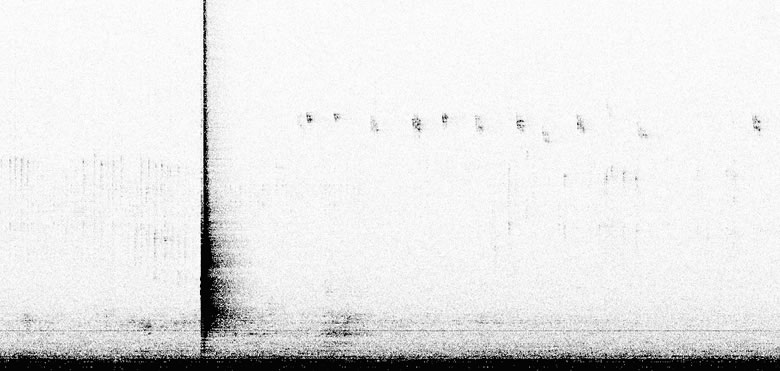[one hour as a well]
 This sound piece, designed around the audio recording of a well, done on 26/08/2004 in Pommier, Bellac, France, is carried out within the framework of the [As] radio show on ResonanceFm in London.
This sound piece, designed around the audio recording of a well, done on 26/08/2004 in Pommier, Bellac, France, is carried out within the framework of the [As] radio show on ResonanceFm in London.
Any hollow “tube” is a body which resounds according to the sound vibrations, and whose frequency of principal resonance is proportional to its diameter and its length.
A microphone “plunged” in this tube allows to collect this frequency which modulates and is modulated by the sounds of the sound environment in which it is.
Everyone made already the experiment to listen to the sounds through a plastic pipe, for example, and remembers in the way in which the surrounding sound was found coloured.
This principle was already applied in my work [1], in order to carry out a first sculpture of the sound of it (… “natural”), or simply to collect particularly marked acoustic situations (sound signatures of objects or places).
And after all, a well is nothing other than a tube whose diameter makes it possible however to obtain a significant low frequency band [2].
My parents have a well in their garden, located at 1km of a trunk road and under an air lane: I decided to put my ears at it.
The well is a kind of “hole” absorbing the sounds and the dye of its own sound signature ; it is not a sound source but an object with acoustics so particular that it colors the surrounding sounds in the continuous drone. These same surrounding sounds (motor vehicles, planes, wind, birds, insects…) “also play” the well as a mouth would blow in a wind instrument.
It then becomes difficult to dissociate the “inside of the outside” [3].
kdi dctb 166 [a] [one hour have has well ] is a first audio piece designed around this concept of the recording of the sound signatures of the wells ; it is carried out within the framework of the radio broadcast [As] on ResonanceFm in London.
[bandcamp width=100% height=120 album=2472273167 size=medium bgcol=333333 linkcol=ffffff]Technical notes
Recorded : 26/08/2004 in Pommier, Bellac (87), France between 18h00 and 19h00;
System : 2 omnidirectional microphones separated from 1m and laid out with 1m50 of depth inside the well;
Composed/mixed : 27/08/2004 ;
Duration : 1h00 ; the piece consist of a simple superposition of the sequence of the rough recording of the well (1h00) + the same sequence played back an octave higher (0h30) + the same reversed sequence (0h30) ;
no audio treatment was carried out.
Footnotes
[1] See for example kdi dctb 053 B, on phonography.org[2] the frequencies of resonance of this well are around 20Hz
[3] See, on this subject, the chapter “inside and outside” in “Le promeneur écoutant” of Michel Chion – ISBN 2-90803496-4
[one hour as a well]
 Tout “tube” creux est un corps, qui résonne en fonction des vibrations sonores, et dont la fréquence de résonance principale est proportionnelle à son diamètre et à sa longueur. Un microphone “plongé” dans ce tube permet d’en capter cette fréquence qui module et est modulée par les événements de l’environnement sonore dans lequel il se trouve.
Tout “tube” creux est un corps, qui résonne en fonction des vibrations sonores, et dont la fréquence de résonance principale est proportionnelle à son diamètre et à sa longueur. Un microphone “plongé” dans ce tube permet d’en capter cette fréquence qui module et est modulée par les événements de l’environnement sonore dans lequel il se trouve.
Tout le monde a déjà fait l’expérience d’écouter des sons à travers un tuyau plastique par exemple et se souvient de la façon dont le son environnant s’est retrouvé coloré.
Ce principe a déjà été appliqué dans bon nombre de mes travaux [1], afin d’en effectuer une première sculpture du son (… “naturelle”), ou bien simplement de capter des situations acoustiques particulièrement marquées (signatures sonores d’objets ou de lieux).
Et après tout, un puits n’est rien d’autre qu’un tube dont le diamètre permet toutefois d’obtenir une gamme de fréquences basses importantes [2].
Mes parents disposent d’un puits dans leur jardin, situé à 1km d’une route nationale et sous un couloir aérien : j’ai décidé d’y mettre mes oreilles.
Le puits est une sorte de “trou” absorbant les sons et les colorant de sa propre signature sonore ; il n’est pas une source sonore mais un objet à l’acoustique si particulière qu’il colore les sons environnants en une drone continue. Ces mêmes sons environnants (véhicules automobiles, avions, vent, oiseaux, insectes…) “jouent” aussi du puits comme une bouche soufflerait dans un instrument à vent.
Il devient alors difficile de dissocier le “dedans du dehors” [3]
kdi dctb 166 [a] [one hour as a well] est une première pièce conçue autour de ce concept de l’enregistrement des signatures sonores des puits ; elle est réalisée dans le cadre de l’émission radiophonique [as] sur ResonanceFm à Londres.
[bandcamp width=100% height=120 album=2472273167 size=medium bgcol=333333 linkcol=ffffff]Notes techniques
Enregistré : 26/08/2004 à Pommier, Bellac (87), France entre 18h00 et 19h00 ;
Système : 2 microphones omnidirectionnels séparés de 1m et disposés à 1m50 de profondeur à l’intérieur du puits ;
Composé / mixé : 27/08/2004 ; Durée : 1h00 ; la pièce consiste en une simple superposition de :
la séquence de l’enregistrement brut du puits (1h00) ;
la même séquence rejouée une octave plus haut (0h30) puis cette même séquence renversée (0h30) ;
aucun traitement audio n’a été effectué.
Notes
[1] Voir par exemple « kdi dctb 053 [b] », sur phonography.org n°2[2] Les fréquences de résonance du puits en question sont aux environs de 20Hz
[3] Voir à ce sujet, le chapitre “le dedans et le dehors” dans “Le promeneur écoutant” de Michel Chion – ISBN 2-90803496-4
